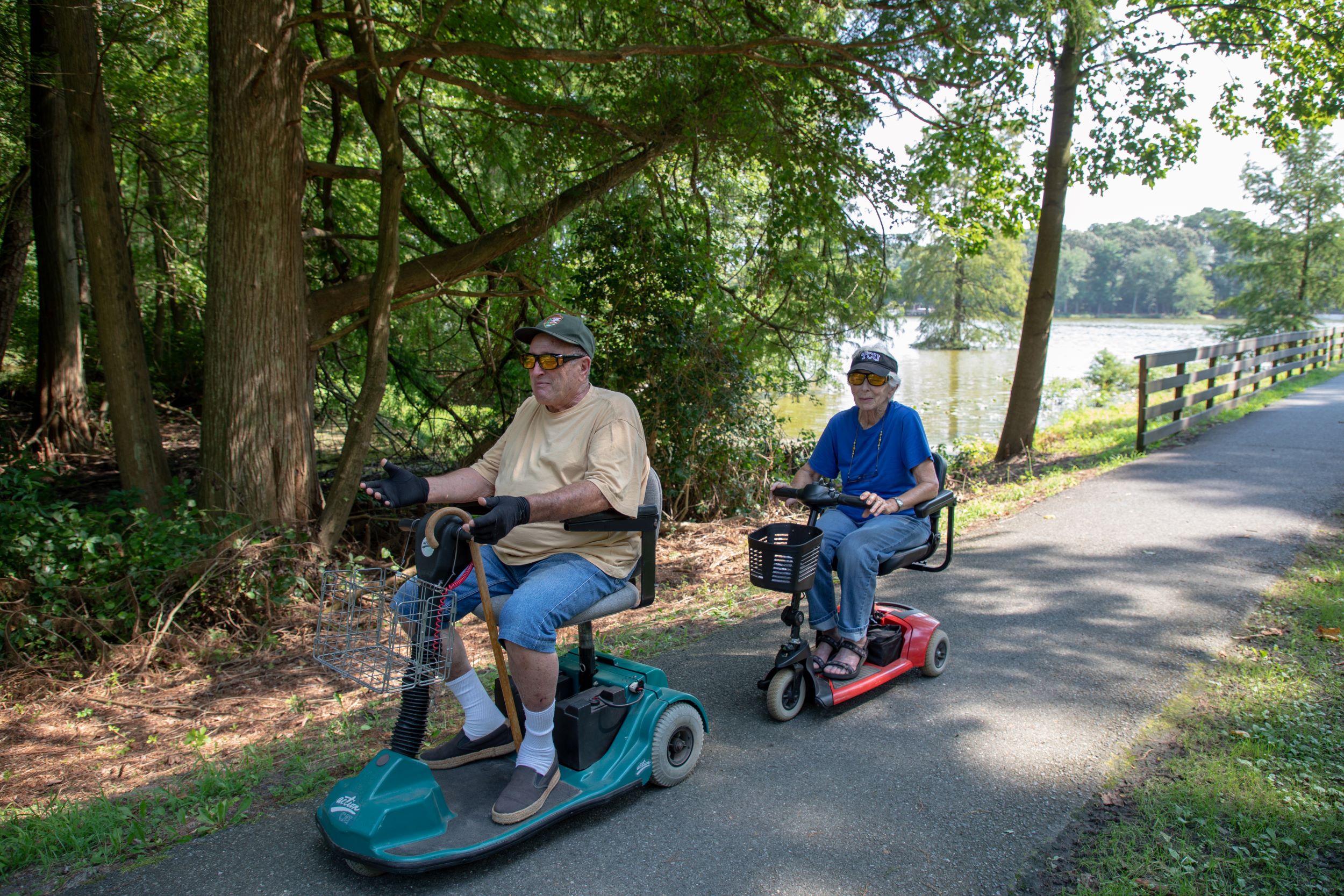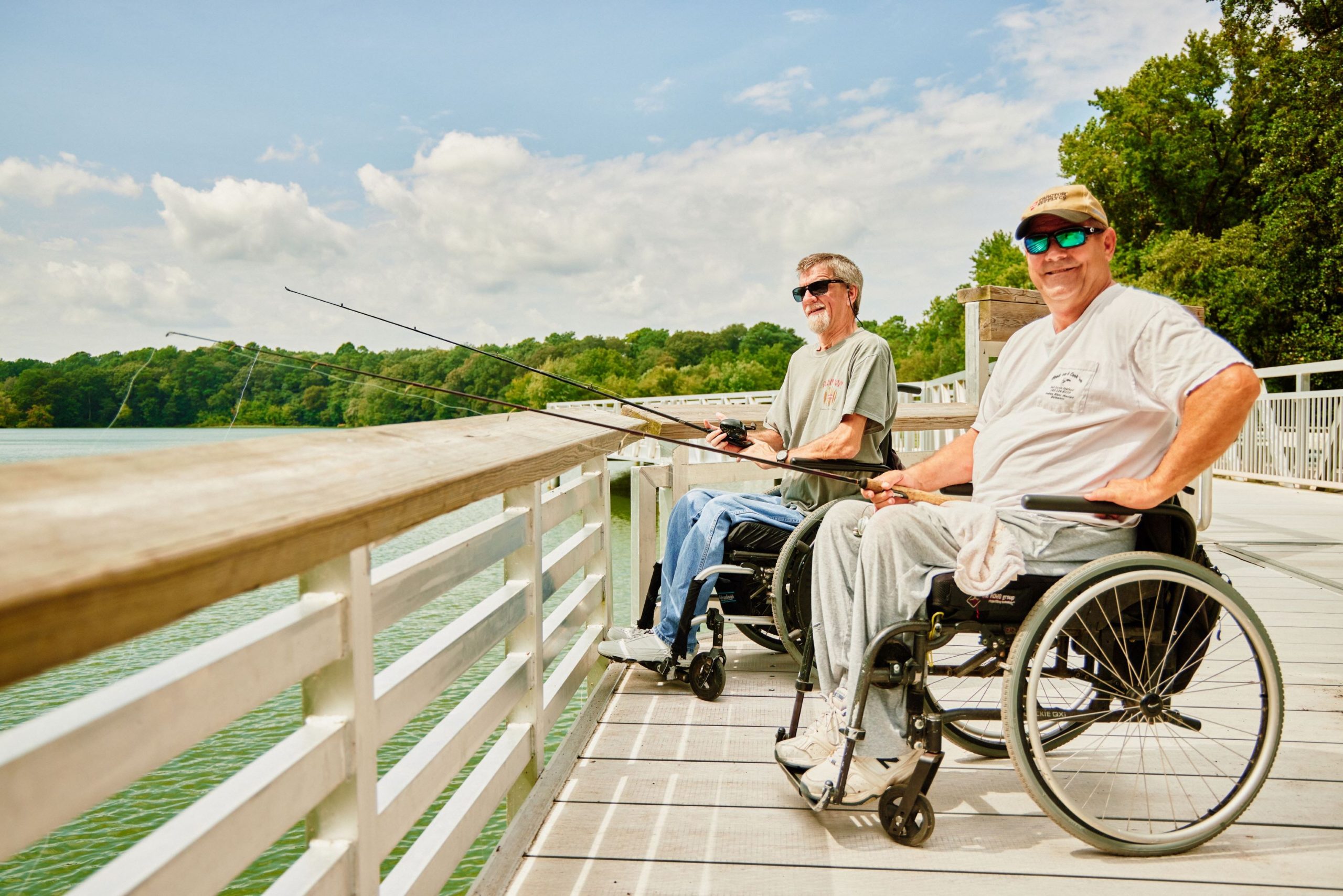Outdoor Delaware is the award-winning online magazine of the Delaware Department of Natural Resources and Environmental Control. Articles and multimedia content are produced by the DNREC Office of Communications.
Known for its breathtaking panoramic views and historical charm, Delaware is home to some of the country’s most scenic wildlife areas and state parks. Each is unique, creating a different experience and opportunities for lasting memories with recreational activities like angling, hunting, birding, boating and more. However, these areas and outdoors activities are best enjoyed when everyone is able to get involved.
The Department of Natural Resources and Environmental Control is working with the help of various state and federal grants to ensure accessibility is a foremost goal for renovations to existing structures as well as any new recreational amenities or facilities that might be built.
“The state has been so receptive to making parks and other areas more accessible,” said Linda Lopez, a Kent County resident who has become an advocate for people with disabilities since her grandson Jared became paraplegic in 2021. “I truly believe we’re doing more.”

The DNREC Division of Parks and Recreation aims to enable opportunity for people of all abilities to experience the natural and cultural resources in Delaware State Parks. All capital projects go through the Architectural Accessibility Board and the division is continuously learning from the community how to make further improvements. Projects meet the standards of the Americans with Disabilities Act (ADA), a landmark 1990 civil rights law that seeks to prevent discrimination against individuals with disabilities.
The division’s Strategic Plan contains the addition of 75 new accessible amenities to be put in place through 2026. These updates include mobility mats, beach wheelchairs, adaptive kayak launches, paved paths, accessible hunting stands, campsites specifically designed for individuals in wheelchairs and more.
Already offering accessibility through the Strategic Plan are a historic bridge erected in Auburn Valley State Park to be compliant with the ADA, and the park’s Steam Museum, renovated for accessible bathrooms and exhibit space.
The Pomeroy Trail at White Clay Creek State Park now has lighting for improved visibility, and the Wendell Castel Trail was repaved. In Wilmington State Parks, a “boundless” Can-Do Playground is accessible to all children, regardless of physical or sensory limitations.

At Fort Delaware State Park, a wheelchair-accessible trail that leads to a viewing platform is under construction. Bathrooms were improved for accessibility at Fox Point State Park, while an event pavilion for tournaments, group outings and other special events has been constructed at Garrisons Lake Golf Course. A paved path leads up to the pavilion, which is ADA-compliant with a level concrete floor.
Killens Pond State Park opened its elevated boardwalk that runs from the boat rental area to the boat ramp and offers accessible fishing opportunities. At Lums Pond State Park, a sensory trail was rerouted and resurfaced, and the Bob Trail was resurfaced at Trap Pond State Park.
In Cape Henlopen State Park, advancing accessibility can be seen in pole showers meeting ADA requirements that were installed at Gordons Pond. The pathway to the Fort Miles Artillery Park was paved, providing full accessibility to all gun pads and the northwest entrance of Battery 519. Mobility mats were also added to enable improved beach access for wheelchairs. In Delaware Seashore State Park, more ADA-compliant pole showers were installed at South Inlet. Beach mobility mats were put in place there as well.
The DNREC Division of Fish and Wildlife conserves and manages Delaware’s fish and wildlife and their habitats, and provides fishing, hunting, wildlife viewing and boating access on more than 68,000 acres of public land. There have been numerous additions, upgrades and updates to make fishing and wildlife viewing accessible.

With the use of the Federal Sport Fish Restoration Funds through the U.S. Fish and Wildlife Service, the Division of Fish and Wildlife has been able to complete projects to improve existing as well as construct new boat ramps. Some recent projects, all of which are ADA-compliant, include:
For those who love wildlife viewing, there are newly renovated ADA-compliant viewing towers at both the Augustine and Little Creek Wildlife Areas.
Part of DNREC’s mission is providing quality outdoor recreation and that commitment applies for all Delawareans. The Department continues to work toward ensuring that everyone, residents and visitors alike, can find an enjoyable and equitable experience in the great outdoors of the First State. And DNREC’s expanding accessibility in parks and wildlife areas and on Delaware waterways makes that discovery more and more of a certainty.

“I have personally used a couple of the accessible wheelchair hunting blinds, am familiar with the boat area down at the Inlet as a wheelchair friend of mine keeps his boat there, have been to Killens Pond State Park many times and have found all of these amenities to have been great,” said Scott Ward, a Milford quadriplegic resident who has relied on a wheelchair for 38 years. “I think Delaware and DNREC have been doing a good job with accessibility in many places throughout the state.”
Related Topics: accessible, Fishing and Hunting, fun, outdoors and recreation, people